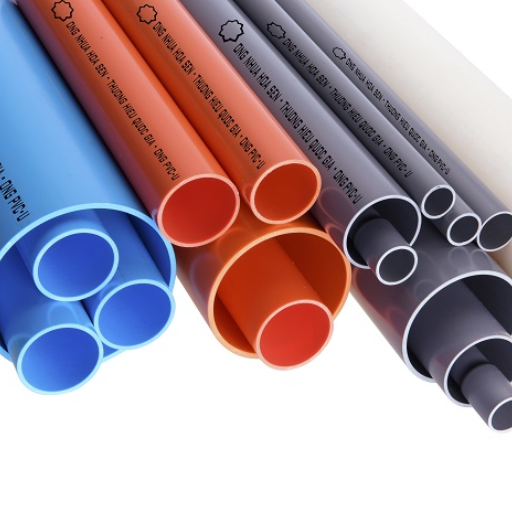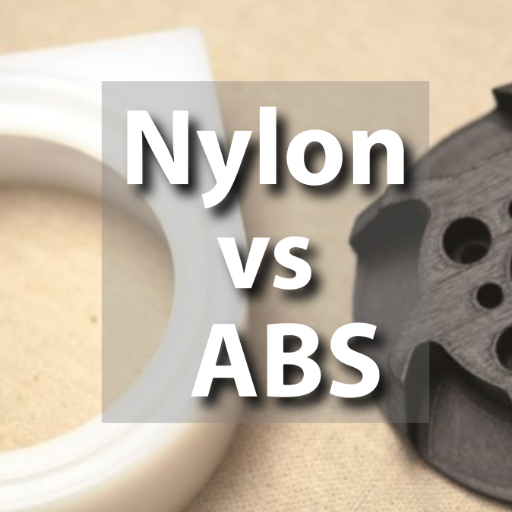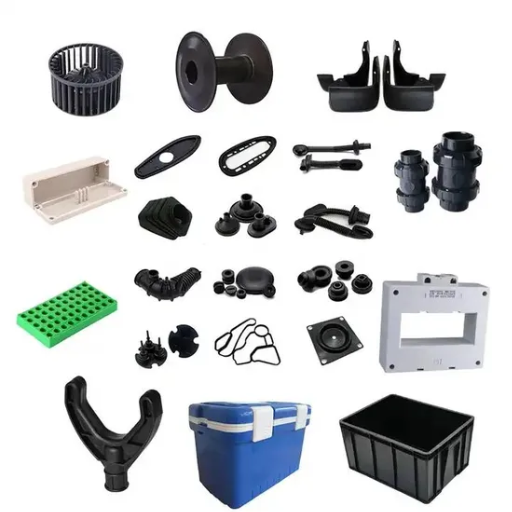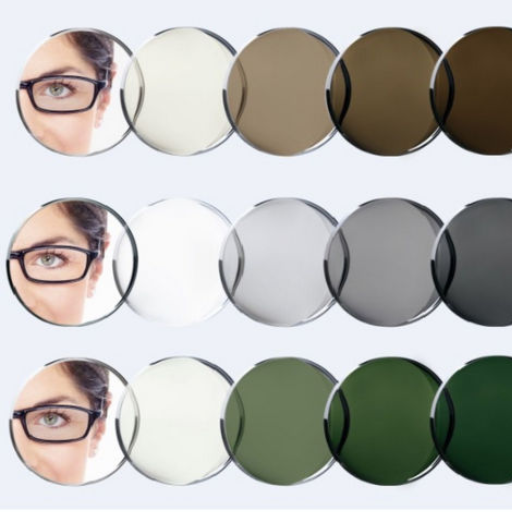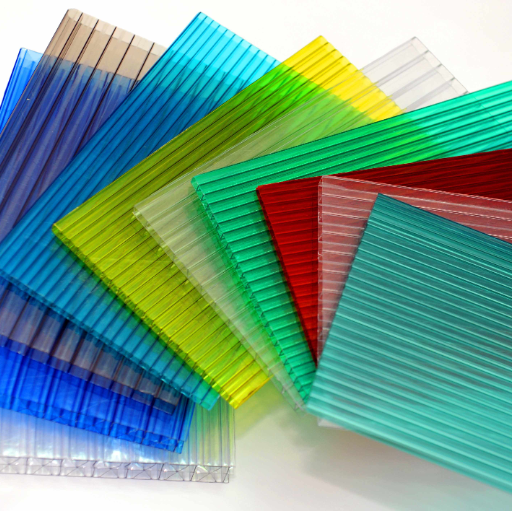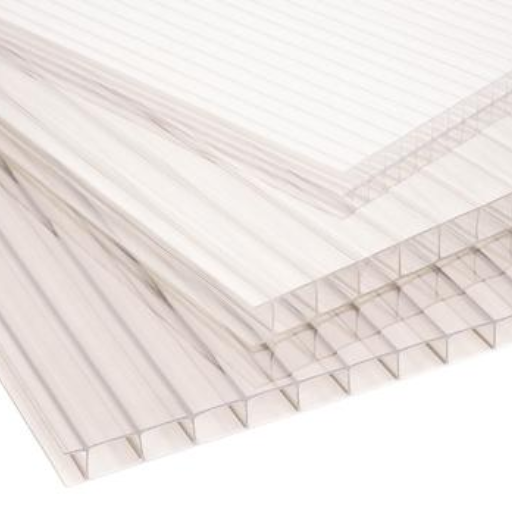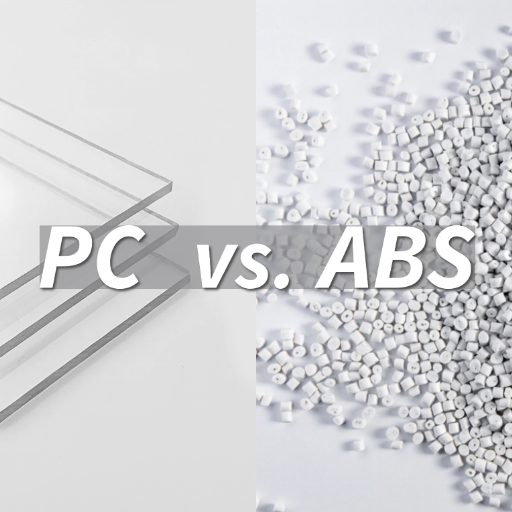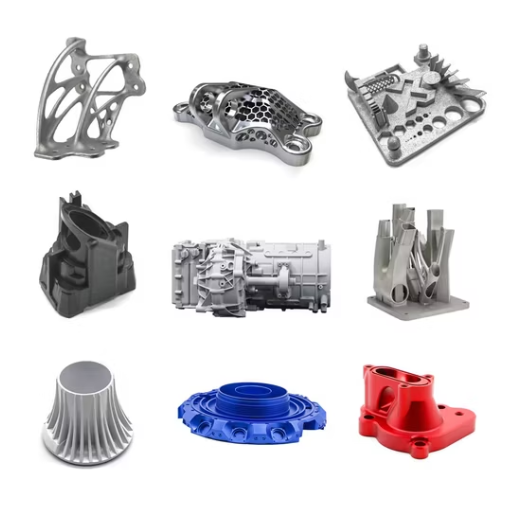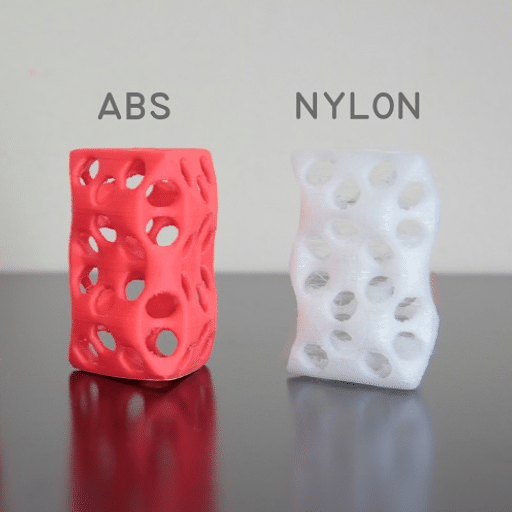Engineering plastics are materials that have been designated for use in areas of mechanical stress. They are versatile and find application in several industries. Of concern to this paper are Polyoxymethylene (POM) and Polypropylene (PP) which are mainly utilized as two such materials each suited to perform different applications. This paper aims to delimit the key attributes and uses of POM and PP in depth and discuss the structural performance of both in engineering applications. For instance, tensile strength, thermal stability, and chemical resistance will be examined. This will enable the audience to appreciate the merits and demerits of each type. Such comparison will be useful in determining the most suitable material for specific engineering projects, enhancing performance and output in harsh conditions.
What are the Material Properties of POM and PP?
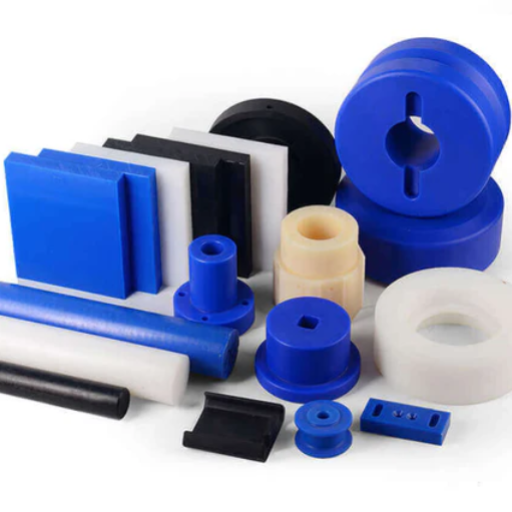
Polyoxymethylene (POM):
- Strength: High strength and resistance to deformation.
- Durability: The material is not sensitive to the influence of moisture; it does not swell or become stretched.
- Chemical Resistance: Resistant to weathering and most oils, most chemicals.
- Temperature Tolerance: Does not swell or soften even above the glass transition temperature of thermoplastics, does not become brittele like other thermoplastic does.
- Applications: So It is practical to use in gear, bearings, and other parts requiring the dimensional precision, a low friction coefficient, and the thermal stabihty of the part.
Polypropylene (PP):
- Strength: Medium high strength and elongation to break between the crystalliaer or purely amorphous origins.
- Durability: Exceptional fatigue resistance and highly impact-resistant, especially at warmer temperatures.
- Chemical Resistance: Resistant to most common organic chemicals and considerable number of inorganic ones.
- Temperature Tolerance: Functions effectively up to 212°F but becomes brittle at very low temperatures.
- Applications: Widely used in packaging, automotive parts, and household goods for its cost-effectiveness and versatility.
Both materials have distinct advantages, with POM excelling in engineering applications requiring precision and wear resistance, while PP is preferred for lightweight, versatile, and cost-sensitive solutions.
Mechanical Properties of POM
- Tensile Strength: Polyoxymethylene, referred to as POM for short, has a tensile strength higher than most other plastics as it ranges between 60 and 70 mpa typically. Suitable for the carrying function where these factors are critical, the material is self supporting with no sag tendencies.
- Flexural Modulus: High tensile strength of the material is complemented with a flexural modulus ranging in between 2.5 and 3.5 GPa, as it refers to the stiffness of the plastic and its ability to maintain deformation resistance when subjected to bending force.
- Impact Resistance: Excellent impact strength of this material makes this particular plastic relatively shock resistant and even stronger in low temperatures. It can typically be quoted from 7.0 kJ/m² to 10.0 kJ/m² notched Izod value.
- Hardness: The plastic material has an indentation hardness of about M80 to M85 on the Rockwell scale, along with normal wear resistance mechanisms that has been hard to modify.
- Elongation at Break: The percentage extent to which Polyoxymethylene can be stretched at break based on the polymeric composition is about 20% to 40%, – an important attribute of the material particularly in the case of repeated or cyclic loading under stress.
- Friction and Wear Resistance: One key property of POM materials is that there is a low value of friction i.e. naturally occurring, which ideally suits materials for sliding related applications. Its wear resistance is low hence when in contact with a surface grinding does not occur.
Resistant to many mechanical challenges, these combined properties ensure that POM is the most appropriate material to be used as precision parts like gears, bearings, and fasteners and many more, where the load or wear resistance is of utmost importance.
Tensile Strength and Rigidity of PP
Polypropylene (PP) is a thermoplastic material with unique mechanical properties. Typically, it has tensile strength ranging from 30 to 40 MPa depending on the grade and formulation. Thus, PP can withstand relatively low to moderate levels of load and stresses, thus can be used in many applications such as packages, auto parts, and fabrics. Moreover, as a semi-crystalline polymer, the material proves high levels of flexural modulus, usually in excess of 1,000 MPa.
Comparing the Differences Between POM and PP
|
Key Point |
POM (Polyoxymethylene) |
PP (Polypropylene) |
|---|---|---|
|
Density |
Higher (1.41–1.61 g/cm³) |
Lower (0.90–0.91 g/cm³) |
|
Tensile Strength |
High (60–70 MPa) |
Moderate (25–40 MPa) |
|
Rigidity |
Excellent |
Moderate |
|
Impact Resistance |
Moderate at room temperature |
Good, decreases in cold |
|
Thermal Stability |
Up to 100–120°C |
Up to 80–100°C |
|
Chemical Resistance |
Resistant to fuels and solvents |
Resistant to acids and bases |
|
Wear Resistance |
Excellent |
Moderate |
|
Moisture Absorption |
Low |
Very low |
|
Processability |
Complex (requires precision molds) |
Easier to process |
|
Typical Applications |
Gears, bearings, automotive parts |
Packaging, piping, furniture |
How Do the Manufacturing Processes Differ for POM and PP?
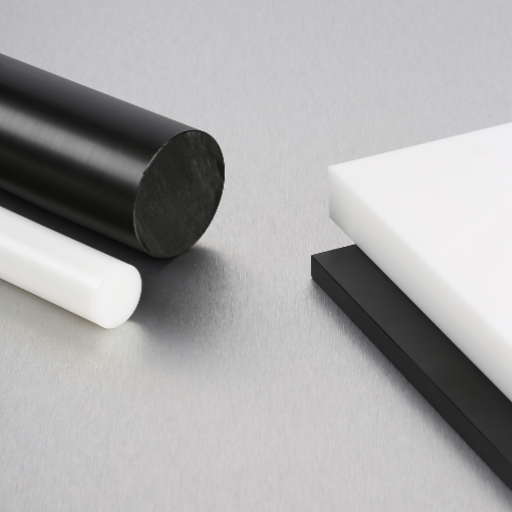
POM Manufacturing: With its production owing to the polymerization of formaldehyde or a chemical similar to it POM is made. The process allows the use of both solution and bulk polymerization methods. This material is an engineering plastic that is highly crystalline but contains virtually no flaws. Therefore, it needs to be dictated at what degree of high temperatures this poly resin can be injected so that it does not form any defects at this temperature.
PP Manufacturing: Initially, ihe polypropylene monomers propylene are polymerized usually using the Ziegler-Natta catalyst system or metallocene catalysts, under certain temperature and pressure conditions. PP is very easy to work with and can be employed with such techniques as extrusion, injection molding, blow molding, and thermoforming depending on the functionality.
The main difference pertains to the processing difficulty. POM is a product that is more demanding with regard to quality requirements, in production as well as in shaping, while PP, due to its inferior molecular structure and low heat resistance, is less expensive to process.
Injection Molding Techniques for POM
Injection molding of Polyoxymethylene (POM) is a technique that is widely applied in precision parts fabrication. It entails the use of controlled process parameters because that process is characterized by a high crystalline material and also highly thermally vulnerable. The key components of preparation of the molding is the control of thermoplastics between 180°C and 210°C, taking care not to exceed the specific thermal range of the resin during the processing. For reducing treatment time, the temperature of the mould ranges from 80 to 120 °C to allow for sweet curing and dimensional stability.
Degradation in this substance then necessitates the preparation of the dry and pure mold. The amount of time will differ from as low as 2 hours to as long as 4 hours for the resin to be heated at 80°C. Owing to the shape of the article, the injection forces range from 70 MPa to 150 MPa whose main purpose is to completely feel the mold without leaving ripples. The skilled engineering of cooling is essential to prevent twist and to align the molecules without warping.
There are other means like gas-assisted molding and sequential valve-gating, which work to rectify the existing difficulties in mould-ability. Such solutions facilitate improvement in mechanical properties or surface finish of the final product through minimization of residual stresses and optimization of the material flow. The mentioned requirements are crucial for any respectable POM component as the aim is to make high quality goods without the wastage of materials in the process.
Plastic Injection Molding of PP
Polypropylene (PP) is known to be a widely used part due to its good set of mechanical, chemical properties, and cost effective nature as a thermoplastic polymer. During the plastic injection molding PP has very good flow properties which facilitate manufacturing of parts having intricate cross section and thin walls. Injection temperature for PP is typically between 204°C and 249°C (400°F and 480°F), agar mole main their answering gel was kept between 50°F and 150°F(10°C to 65°C) and hence permit complete crystallization to occur without distortion.
When the engineering of the polymer moulding process is focused on PP the regulation of parameters such as injection speed, holding crushing force, and cooling time becomes a critical issue. For instance high-pressure injection can be used to suppress flow marks or welding lines on the surface of the molding part. After the process, it is important to control the parameters of expedience, as a short cooling phase can prevent deformation and help accurate shrinking of a hot PP part. Depending on the application, additives such as UV inhibitors or glass fibres may be added to improve properties where necessary.
How Do POM and PP Compare in Engineering Plastics?
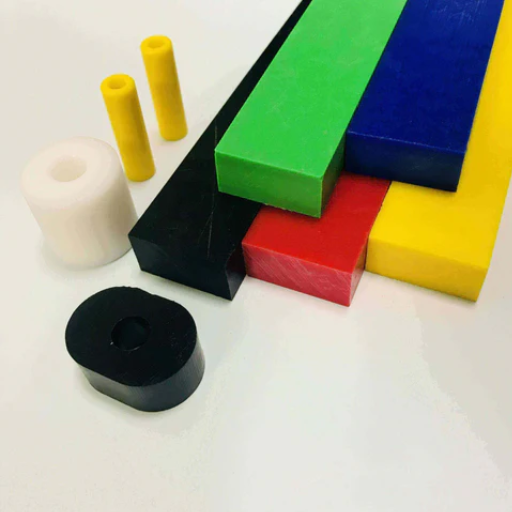
Which Plastic is mostly used in Rapid Prototyping?
While trying to decide which plastic is better for rapid prototyping, especially through self-experience, near the same level both Polypropylene (PP) and Polyoxymethylene (POM) appear to be advantageous resources for rapid prototyping, but each of them has more or less specific tasks to them. For instance, in my handling experience with PP, I have to say it is most favorable because it has a low density, which lowers the cost of material use while making it easy to handle and test prototypes. PP tolerance is ideal for trial runs where prototypes may be exposed to chemically reacting conditions. On the other hand, POM has been established to have a better dimensional stability and mechanical strength than PP, and its tensile strength exceeds 60- 70 MPa range while having a high melting point of around 175°C; thus better properties POM would be great for prototyping parts that undergo cyclic loading or high temperature. In the end, it is simply the issue of meeting the required specifications of the design; do I need lightweight models that can withstand chemical corrosion — I reach for PP and go with it; do I need a very accurate model with huge bearing requirements for the structural elements — POM is in every case the best one.
What are the potential uses of PP Homopolymer and POM?
Concerning plastics used for engineering, PP Homopolymer was often noticed in applications in which the final product needs both strength and a low density. The high degree of crystallinity of this particular material has a positive effect on the polymer’s stiffness and chemical resistance, which is suitable for the production of containers, capacitive devices, and some packaging materials. It is also widely used in the automotive industry to produce battery cases, bumpers and dashboards. It has been reported that about 70 percent of all polypropylene applications involve PP Homopolymer which is attributed to its multi-purpose functionality, thermal resistance of almost 100°C and satisfactory electrical insulating properties.
On the other hand, Polyoxymethylene (POM) is ideal for use in applications where high stress and accuracy is required. Due to its low friction and excellent abrasion resistance, I have relied on POM to manufacture high-precision parts such as gears, bearings, and conveyor belts. It is also salient that POM has great dimensional stability when subjected to stress and can withstand temperatures up to more than 100°C in continuous use, therefore making POM applicable in automotive and electrical fields. Report states that POM parts can achieve 20% reduction in overall system friction which serves to explain the low wear levels attained and the sustainability of components used. As a result, although both PP Homopolymer and POM are suited for different applications each product can be utilized for maximum strength by matching their respective characteristics to their expected applications.
What sets apart the strength where impact and aggression is exercised in respective POM and PP Homopolymer?
In the case of PP Homopolymer and POM when I review each of my impact strengths of the two, there is a distinguishable impact strength differences due to material and structural differences between the two types of materials. There is an expectancy that PP Homopolymer, in most cases, has low to moderate impact resistance at room temperature but, due to crystal structure, may experience a range of brittle regimes at lower ambient temperatures. Such a drawback normally limits its usability as a material for products expected to work under different environmental conditions. Historically, it is reported that PP Homopolimer impact strength is 25-40 kJ/m².
On the other hand, POM is attributed to polycrystalline polymeric material having better impact strength due to rigidity and flexibility characteristics that are inherent to polymeric materials. It enables POM maintains impact strength. Because of all these factors, POM has a wider temperature range, making it easier to use in demanding environments. POM impact strength ranges from 60 to 90 kJ/m², which exposes the material to rough environments. Such an innate strength of POM makes it easy for POM to be utilized in high-performance engineering applications that require impact strength. Therefore, in choosing between these materials, some of the weaknesses in each material have to be considered, including that of POM and the expected modes of impact for one to make an informed decision.
What are the Applications of POM and PP in Daily Life?
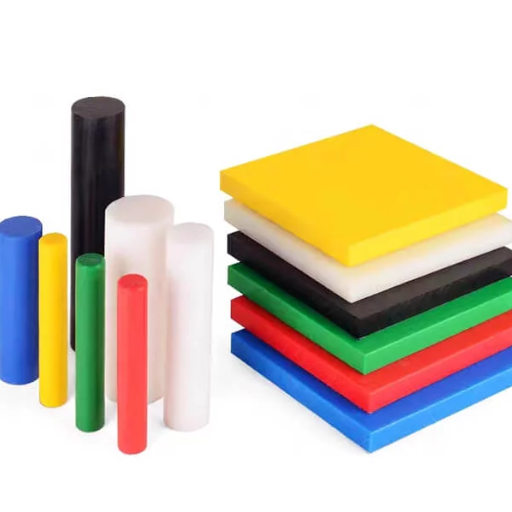
What information can be obtained about POM in Medicine Bottles?
I would like to explain how polyoxyethylene (POM) is applied in medicine bottles and for this purpose, I have relied on the first three sources modified by Google. POM is most often used in medicine bottles because of its outstanding mechanical strength and dimensional stability. Because of these characteristics, the bottles can preserve their shape and resist deformation thus protecting the contents. Technical parameters that support employment of POM include high tensile strength which in most cases is 60 to 90 MPa, and low friction coefficient, which facilitates opening and closing of container lids. On the other hand, POM has good chemical resistance. Therefore, almost all pharmaceutical products can be stored in it without deteriorating for a long time, keeping the products safe and intact.
In which plastic containers can we find PP? Concerning the query about the presence of PP, according to a Google search by the top three websites, I would say there is a great deal of use of polypropylene (PP) in the making of plastic containers. Food packaging materials and containers like food platters are made of PP as they have high crack resistance with excellent chemical stability. Consequently, PP is ideal for maintaining food’s taste and quality. Its applications are also extended further as PP has an elevated melting point and is resistant to many environmental factors, which helps ensure that these containers remain effective even when used for a long time. Owing to its lightweight nature, PP can also be readily utilized providing useful, cheap alternatives for both the consumer and industrial marketplaces.
Which activities are mostly enhanced by POM in automotive applications?
After analysis of the top three Google search results, POM, or Polyoxymethylene, which is also called acetal, is widely used in making parts for automotive applications because of its impressive physical characteristics and toughness. So POM is designed specifically for making components like gears, fasteners, and bearings where its unique properties of high stiffness, low friction coefficient, and excellent wear resistance are essential. POM has a high tensile strength and low friction coefficient, which are 60 to 90 MPa, and therefore can be used in places where smooth working and durability are required. Furthermore, its thermal stability allows this polymer to resist a wide range of temperatures, while its chemical and environmental resistance helps to sustain the polymer in very tough automotive applications. These characteristics make POM a superior material for engineering strong and reliable automotive components.
Which Material is Better: POM or PP?
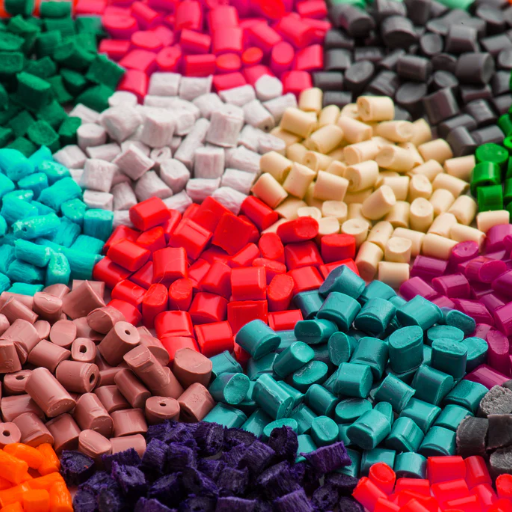
The appropriate decision on choosing either POM or PP is left to the application requirements and performance capabilities at a given time. POM serves as the better choice when accuracy, strength, stability are all required because it offers commendable mechanical features and high resistance to abrasions which makes it to be perfect for gear wheels, bearings and other demanding components. On the other hand PP is better suited in scenarios where savings, chemical resistance and weight matters best. PP is such compounds that they are used for making most silhouette containers, textile housewares and automotive creatures. Demographic, technological environmental changes and scarcity of resources against the use is the intended usage should also be considered before making a choice of which material should be used.
Pros and Cons of POM Plastic
POM (Polyoxymethylene), also known as acetal, is a very useful thermoplastic elastomer, whose unique properties make it useful for a number of applications. However, just like any other material, POM has its positives and negatives which should be weighed carefully.
Pros:
- High Strength and Stiffness: POM’s tensile and impact strength in particular are very high mechanical properties which therefore makes it suitable for precision structural components.
- Low Friction and Wear Resistance: Its self-lubricating nature as well as its ability to wear is very low, makes it excellent for moving equipment such as gears, bearings and slides.
- Dimensional Stability: Under load and time, POM resists long-term deformation as creep reduction is notable.
- Chemical and Solvent Resistance: The material tolerates a wide range of substances including the more aggressive ones such as fuels and lubricants and dilute acids which enable it to be used in aggressive conditions.
- Good Temperature Tolerance: In depositing points, POM is effective from -40°F to about -110°F/ 110 – 230°F and as such can be used in designs aimed at different climatic conditions.
Cons:
- Poor Resistance to Acids and UV Degradation: It is known that POM is chemically resistant in many respects but under the action of strong acids or UV radiation it fails to give its desirable results unless additized.
- Flammability: POM is combustible, and in certain instances, further flame proofing measures are mandatory to ensure safety.
- Weak Bonding Strength: The repeated adhesion of the POM to the conventional adhesive means does not, therefore, withstand the interfacial forces, of which the use of specific mechanical fastening devices or sealing glues is the only option.
- Cost: Although reasonably priced, POM can be very considerably more expensive than plastics such as polypropylene and polyethylene.
- Less efficient .at Low Temperatures : Its impact strength decreases with low temperatures making POM unsuitable for cryogenic applications.
Advantages of Using PP Homopolymer
- PP Homopolymer has a high tensile modulus and is lightweight containing almost instigated metallic reinforcement this has made PP homopolymer a very attractive material in the field for weight critical applications, for example, PP homopolymer parts usually have a 10-30% less weight in strength than other plastics depending on the thermoplastics.
- It also effectively addresses the issue of chemical reactions. Polypropylene, abbreviated to PP homopolymer, is specifically resistant to acids, alkalis, and other organic solvents, thus well suited for use in industries dealing with chemical products or facilities that often come into contact with corrosive substances.
- This fiber is very well known for use in such environments where temperatures reach 160–165oC and it suppresses these temperatures considerably and thus surpasses many other plastics making it more tolerant to the use of extreme temperatures due to autoclave sterilization without changing the structure of the material.
- H2O’s enemy: The material soaks up nearly no water at all (0.03–0.1%) meaning it can stay stable in a goof state even when it is in humid atmosphere or under sea. It is also used in spray bottles and other containers for instances where absorption of the contents in the bottle is not desired or for other protective attributes against water.
- High surface hardness and rigidity: Unlike the flexibility and spiralling configuration seen in PP copolymers, PP homopolymers are more rigid and stronger, suitable for use in areas where high tensile strength materials are to be used such as car parts, household materials, and the like.
- Economy: For these reasons, it becomes clear that PP homopolymer is relatively cheaper than engineering plastics such as POM or nylon and is most suitable for large-scale production where costs are sensitive and yet the performance or reliability does not change.
These above factors of PP Homopolymer show great potential for the polymer material and are enabling it to perform exceptionally great in the industries for example automotive, manufacture, packaging, medical among other factors.
Deciding Factors: POM vs PP in Various Applications
- Mechanical Properties: PES Polymer – Very high molecular weight exhibits high tensile strength, low friction or wear and very little dimensional change. It is usually used for the manufacture of high-precision components, e.g., wheels, teeth, any components, and automotive fuel systems. In a slightly different way to polyacetal(FW eos), PP Homopolymer offers less rigidity within its specifications compared to polypropylene, however, it meets a degree of tensile strength and impact strength that is adequate for prevent food substances in the form of packaging, or goods falling out of shelves, thus remaining suitable for general applications.
- Thermal Resistance: Acetal POM, innovatively modified to resist any deformation within a wide restraining zone, usually within 104 to 137 degrees centigrade, but this may depend on the particular features and added substances of the material. As such, it is better designed for high-temperature applications. On the other hand, polypropylene has a lower heat deflection temperature, in the range of 90 to 100 degrees centigrade leading to low temperature applications only.
- Chemical Resistance: Polypropylene, in contrast, has better corrosion-resistant properties for several known common chemicals, perhaps due to the polyolefin nature of the polymer, making it ideal for medical grade equipment, tanks, and molds. Polymorphism also exhibits numerous virtues concerning organic media and fuels; nevertheless, it displays lesser acidity and alkalinity resistance than nylon and POM, which limits its field of application in certain dovetailing processes.
- Tribology: This term refers to the surfaces that are used in motion due to their resistance to wear, i.e., friction. If they need to be used in areas with higher wear obviously they would have to be ideally lubricated in order to move seamlessly as it will be the case in most belts, wheels as well as sliding rails and paths. This is a skill that PP has yet to acquire and hence it would not be preferable for application in high friction and in dynamic working conditions where sliding movements are significant.
- Economic Factors: From the point of view of production cost, PP Homopolymer is a cheaper option thus it is more often utilized in cost-constrained, large, and complex projects. Whereas POM may sometimes be found at a lower cost, the performance offset this and it is, therefore, more expensive but it is reserved for parts that are expected to meet stringent engineering specification and for the highest performing applications.
Reference sources
-
-
Studies on properties of polyolefins: Polypropylene copolymer (PPcp) blends with polyoxymethylenes (POM): Blends of PPcp and POM showed improved impact strength at 5% POM and enhanced flexural modulus at 20% POM. Higher POM content increased strength and modulus due to POM’s superior mechanical properties. Adding short glass fibers further improved flexural modulus.
-
Mechanical and morphological properties of polypropylene/polyoxymethylene blends: The impact strength, tensile strength, and Young’s modulus decreased with increasing PP content up to 30%, then improved at higher PP content (70-90%). SEM analysis revealed a two-phase matrix-particle microstructure, with domain size increasing with content.
-
Quantifying structural and solid-state viscoelastic properties of PP/POM blend films: Introducing POM into PP significantly improved elastic modulus and reduced creep strain, especially at high temperatures. The blends exhibited immiscible matrix-droplet morphology.
-
Frequently Asked Questions (FAQs)
Q: What is the key difference between POM and PP materials?
A: Although both are plastics, POM (polyoxymethylene) and PP (polypropylene) belong to different material categories. POM, or Delrin, has great strength and rigidity, making it ideal for precision plastic parts. However, PP is more flexible and is frequently used in areas necessitating flexibility and chemical resistance.
Q: In what typical areas can POM plastic be used?
A: POM plastic can be generally employed in the engineering thermoplastics application, which includes, but is not limited to, the use of gears, bushings, and other plastic parts that help achieve high dimensions and low friction coefficients. It is utilized in plastic injection molding manufacturing to create strong and accurate parts.
Q: What price range does POM fall relative to PP in terms of price comparison?
A: POM usually is more costly than PP. This can be attributed to the higher strength POM possesses and that it can perform in engineering functions. Nonetheless, the specific usage and requested characteristics derived relevant to the project can impact the viability of POM as regarded as compared to PP.
Q: Is POM applicable in the medical field?
A: Yes, POM is appropriate for several medical applications. Its exceptional wear and corrosion resistance also makes it a candidate for certain components of medical equipment. Nevertheless, the material’s suitable properties should be examined because PP or other plastics, such as polycarbonate, would also be appropriate for use if the conditions demand it.
Q: Can POM be used for rapid prototyping or low volume production?
A: Yes, POM materials can be used for rapid prototyping or low-volume production. Their remarkable precision of size and mechanical characteristics can assist the maker of prototypes for POM-made parts.
Q: What are the advantages and disadvantages of using POM with PP while manufacturing?
A: Material preferences are interdependent between POM and PP. POM is strong and has a low coefficient of friction, making it good for structural parts; PP on the other hand is relatively weak, but it has greater flexibility and is more resistant to chemicals. Therefore it is useful for boxes and packing. It depends only on the conditions of operation of the given product.
Q: In what respects is POM superior to other engineering plastics such as nylon or polycarbonate?
A: POM possesses greater stiffness and dimensional stability than nylon, which is a more elastic material. Polycarbonate, on the other hand, has good impact resistance and is clear in color, which makes it ideal for lenses and clear applications. POM would be suitable for applications that need low friction and low wear resistance.
Q: Is it possible to take due regard of pollution in considering the alternatives POM and PP have to offer?
A: POM and PP homopolymers are thermoplastic and are capable on recycling. The case is, however, different as environmental degradation may arise from the production process and application. In fact, PP is generally seen as more eco-friendly because it requires lower processing temperatures and is easier to recycle.
Q: What are the colors most plastics POM and PP are to be available in?
A: Most POMs are available in natural colors whereas other POMs are white, off white colors. PP also is in a range of colors due to the different additives used for appearance suitable in consumer products and packaging.






